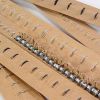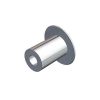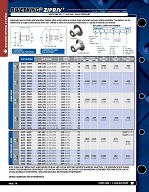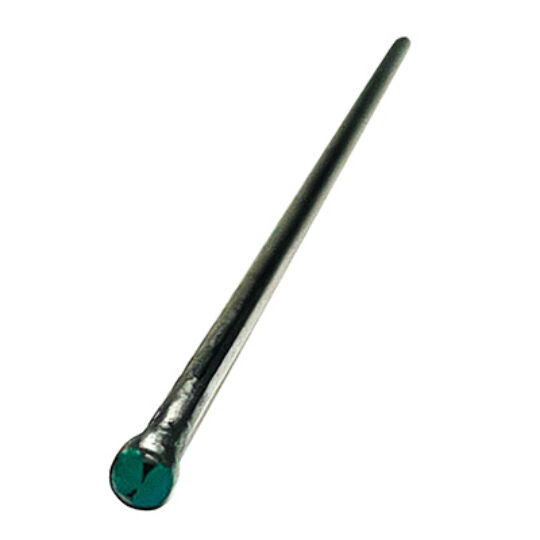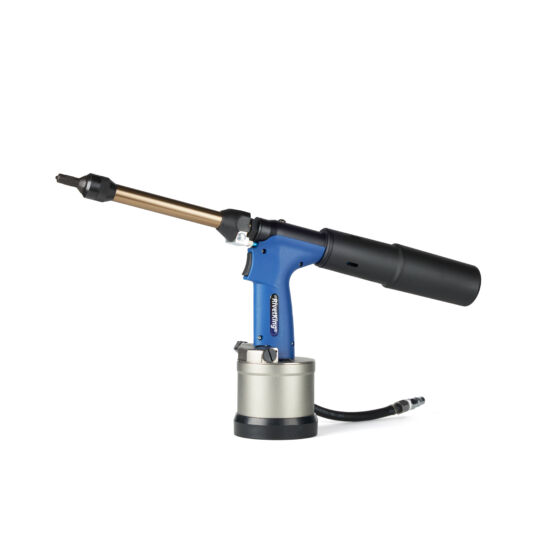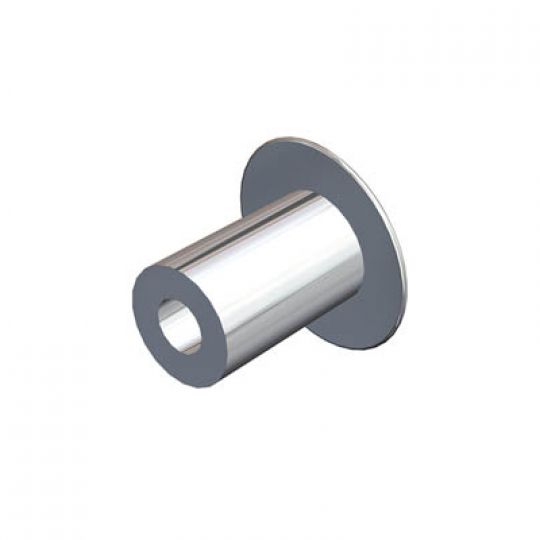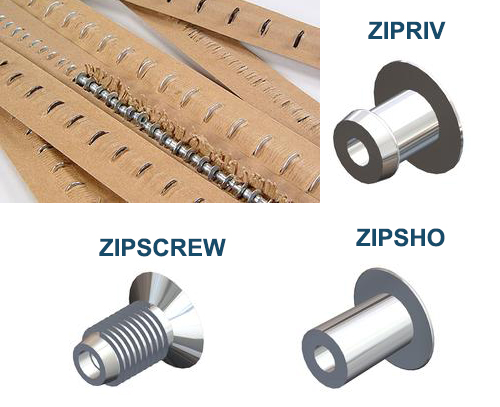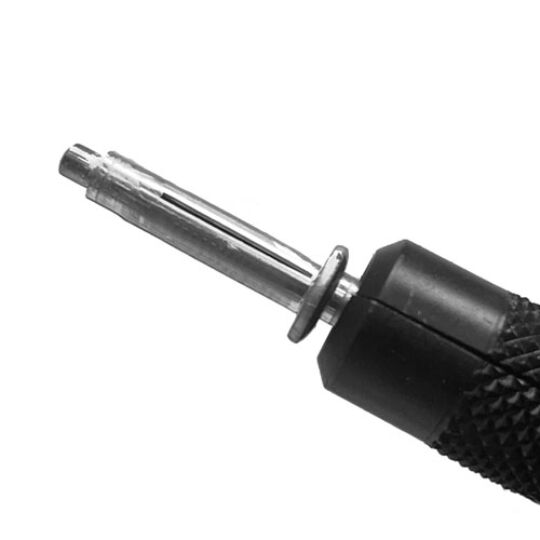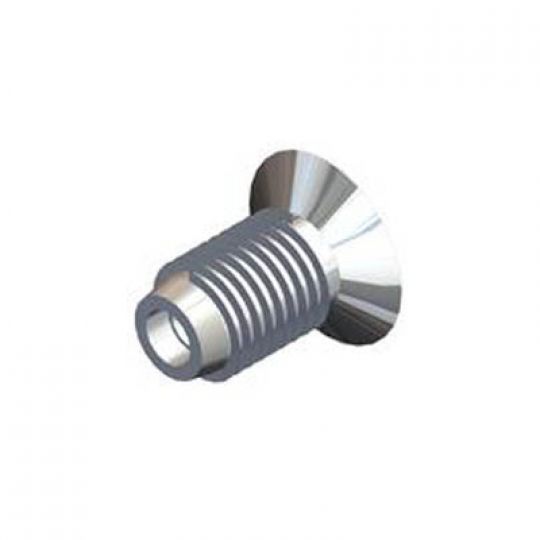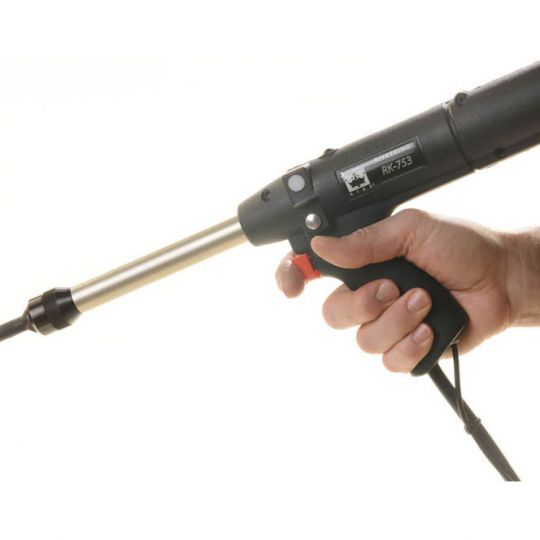ZipRiv®
ZipRiv®
The ZipRiv® is part of the RivetKing® QuickRiveting System. It has a bulbed tail providing consistent high clamp and shear, making it ideal for assembling many materials including metal, plastic and aluminum alloy. With easy installation and lower in-place costs than welding or traditional blind rivets, this QuickRiveting system is extensively used for light fabrication needs. PROP 65 Warning for STAINLESS STEEL products: ![]() WARNING: This product contains Nickel, a chemical known to the State of California to cause cancer. For more information go to www.P65Warnings.ca.gov
WARNING: This product contains Nickel, a chemical known to the State of California to cause cancer. For more information go to www.P65Warnings.ca.gov
- Product Assistance
- Description
- Design Considerations
- CAD Files
- Catalog
Industrial Rivet & Fastener Co. can help you select the right product or tool for your application. Please contact our experienced Product Specialists with any questions. We look forward to hearing from you! 1-800-BUY-RIVET or info@rivet.com
ZipRiv® Speed fasteners with a bulbed tail providing consistent high clamp and shear
Overview
The ZipRiv® is part of the RivetKing® QuickRiveting System. It has a bulbed tail providing consistent high clamp and shear, making it ideal for assembling many materials including metal, plastic and aluminum alloy. With easy installation and lower in-place costs than welding or traditional blind rivets, this QuickRiveting system is extensively used for light fabrication needs.
Key features and benefits
- Bulbed tail and foreshortening of the fastener during installation ensures high clamp
- Bulbed tail and large headform provide a large bearing area for soft materials
- Tapered tail for ease of hole entry
- Expands radially during installation to ensure maximum hole fill
- Lower in-place costs than welding or traditional blind rivets
- Hot tin dipped brass option for ease of soldering and good electrical continuity
- Stainless Steel option for applications subject to high temperatures or corrosion
- Placed using a unique repetition mandrel system for high speed assembly
- Can be bowl fed for larger volume applications using automated equipment
Assembly applications
- Automotive
- Electronic components
- Sheet metal
- Electrical engineering
- Domestic appliances
- Furniture
- General light fabrication
Specifications
- Sizes: 2.4mm (3/32") to 6.0mm
- Materials: Aluminium alloy, steel, stainless steel A2 and brass
- Headforms: Dome/mushroom, countersunk
| ZipRiv® - Series | |||
| Material | Head Style | Product Series | |
| Aluminium Alloy AlMg 2.5% | Dome 120° Countersunk | ZipRiv® ADZ Series ZipRiv® ACZ Series | |
| Steel | Dome 120° Countersunk | ZipRiv® SDZ Series ZipRiv® SCZ Series | |
| Stainless Steel A2 | Dome | ZipRiv® FDZ Series ZipRiv® FCZ Series | |
| Brass | Dome | ZipRiv® BDZ Series ZipRiv® BCZ Series | |
| Brass, electro tin plated* | Dome | ZipRiv® BDZ-TP Series ZipRiv® BCZ-TP Series | |
* RivetKing recommends tin plated ZipRiv parts are installed within nine months from the date they were produced.
Surface finish options
If you are looking for other surface finish options than shown in the above datasheets please download our This will show you what surface finish options are possible to apply to our standard fastener types as "customer specials".
Customised Designs We can design and manufacture speed fasteners with a wide variety of forms and finishes to meet your unique assembly requirements. Please refer to this page to find examples of our customised capabilities:
Installation Equipment
From cost-effective hand tools to bespoke assembly systems, Speed Fastening® equipment offers rapid and reliable assembly. The equipment is an integral part of the speed fastening system and offers the following benefits:
- High speed, repetitive fastener feed
- Typical assembly cycle times within two seconds
- Blind sided assembly
- Simple operation
- One tool places the entire range of speed fasteners with a simple modification
- Quick reloading
- Low maintenance costs
- Ideal for low volume batch work through to fully automated assembly lines
Design Considerations
Grip Range: Determining the length of the rivet is critical to ensure the rivet will function as intended. If the rivet is applied over or under its intended grip range, it may not work properly. All manufacturers list a range of material thickness in which the product will perform properly. This thickness is commonly called the grip range. Setting rivets outside of their specified grip range can lead to functional failures. Rivets set over-grip will not retain the mandrel head, causing it to fall out of the rivet body after setting. Rivets set under-grip can bend and offset, reducing the overall strength and aesthetic appearance. Failure to adhere to the grip range may also cause a premature break or difficulty in clearing the spent mandrel from the setting tool. Also be sure to account for the theoretical grip versus the actual grip. While the grip may be calculated by adding the thickness of the two materials together, be sure to account for any burrs, bends and manufacturing tolerances which may increase or decrease the overall grip of the materials being riveted.  Hole Size: Hole sizes are extremely important for the proper functionality of blind rivets. We specify a hole size for every rivet we manufacture. A rivet is only guaranteed to function as designed when the hole size is within the prescribed range. Additionally, the design engineer should calculate the manufacturing tolerances of the hole to ensure proper fit so that interference issues will not occur later. Joint Materials & Strength: It is sometimes necessary to use dissimilar materials such as fastening aluminum to steel or plastics to aluminum. Whenever possible, the stronger material should be the secondary side because this is where the setting will take place. As a general rule, a rivet should be used in materials equal to or greater than its own strength, although custom rivets can be produced to work in softer materials. Be sure to verify the compatibility of the rivet materials as galvanic corrosion can occur and is seldom considered in the design phase. Tool Clearance: Sufficient clearances are needed so that the tool can access the joint being riveted without interference. Be sure to account for the riveting equipment in the design phase to prevent the need for customized and potentially costly tooling modifications. Head Clearance: Axial access is required on the primary side being riveted to allow for the flange to overlap the hole without interference. When designing the primary hole, be sure to calculate the head diameter and its tolerances as well as the layout footprint of the head around the hole. This is especially critical when riveting on brackets and other hardware next to bends, folds, extrusions and/or cutouts on the applications. Blind Side Clearance: Since the blind side of the rivet is designed to form into a secondary flange, it is important to leave room for the flange to expand and seat properly. Keep in mind, the collapsed height is shorter than the pre-installed height. Therefore, be sure the secondary side can accommodate the entire rivet length (including the mandrel head), before riveting. Testing should be done in the design phase to calculate what distances are needed and to verify proper functionality.
Hole Size: Hole sizes are extremely important for the proper functionality of blind rivets. We specify a hole size for every rivet we manufacture. A rivet is only guaranteed to function as designed when the hole size is within the prescribed range. Additionally, the design engineer should calculate the manufacturing tolerances of the hole to ensure proper fit so that interference issues will not occur later. Joint Materials & Strength: It is sometimes necessary to use dissimilar materials such as fastening aluminum to steel or plastics to aluminum. Whenever possible, the stronger material should be the secondary side because this is where the setting will take place. As a general rule, a rivet should be used in materials equal to or greater than its own strength, although custom rivets can be produced to work in softer materials. Be sure to verify the compatibility of the rivet materials as galvanic corrosion can occur and is seldom considered in the design phase. Tool Clearance: Sufficient clearances are needed so that the tool can access the joint being riveted without interference. Be sure to account for the riveting equipment in the design phase to prevent the need for customized and potentially costly tooling modifications. Head Clearance: Axial access is required on the primary side being riveted to allow for the flange to overlap the hole without interference. When designing the primary hole, be sure to calculate the head diameter and its tolerances as well as the layout footprint of the head around the hole. This is especially critical when riveting on brackets and other hardware next to bends, folds, extrusions and/or cutouts on the applications. Blind Side Clearance: Since the blind side of the rivet is designed to form into a secondary flange, it is important to leave room for the flange to expand and seat properly. Keep in mind, the collapsed height is shorter than the pre-installed height. Therefore, be sure the secondary side can accommodate the entire rivet length (including the mandrel head), before riveting. Testing should be done in the design phase to calculate what distances are needed and to verify proper functionality. 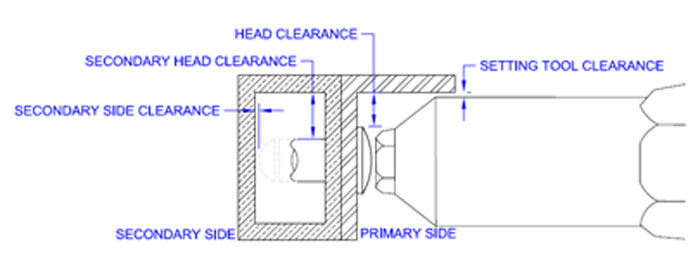 Corrosion Protection: The corrosion factor of a particular rivet is dependent on the corrosivities of the base metal, the protective layer (plating) and the conversion layer (chromate). Being that the most cost effective material to manufacture is steel, most prefer to protect the steel with a plating such as Zinc Chromate, or other alloy platings. Because blind rivets are plated before they are assembled, do not attempt to post-plate an assembled rivet. For standard performance, an SST rating of 24 hours until red rust is common. Other platings such as zinc alloys (Zinc Nickel, Zinc Iron, Tin Zinc) are available which can extend the SST rating to 840 hours until red rust. All specified finishes are tested by RivetKing in accordance with ASTM B117 standards.
Corrosion Protection: The corrosion factor of a particular rivet is dependent on the corrosivities of the base metal, the protective layer (plating) and the conversion layer (chromate). Being that the most cost effective material to manufacture is steel, most prefer to protect the steel with a plating such as Zinc Chromate, or other alloy platings. Because blind rivets are plated before they are assembled, do not attempt to post-plate an assembled rivet. For standard performance, an SST rating of 24 hours until red rust is common. Other platings such as zinc alloys (Zinc Nickel, Zinc Iron, Tin Zinc) are available which can extend the SST rating to 840 hours until red rust. All specified finishes are tested by RivetKing in accordance with ASTM B117 standards.
CAD Files
The following are available for download upon request by emailing engineering@rivet.com .dxf .dwg .IGES .SLDPRT






